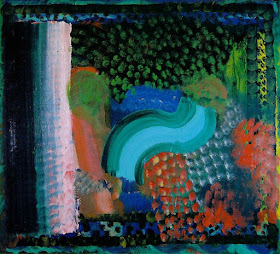Emilio (Emi) Grau Sala (1911, Barcelona - 1975, Paris) was a Catalan painter. He studied at the Fine Art Academy of Barcelona and came to France in 1932. He was a famous colorist (oil painting, watercolor and pastel) and illustrator. In the French Salon "Comparaisons", he was a member of the group of Maurice Boitel.
"A School of Paris painter who never abandoned lyrical figurative and landscape subjects, Emilio Grau-Sala was born in Barcelona and studied at the School of Fine Arts in his native town. Beginning his public career in 1929, he moved to Paris in 1932 and exhibited at the Salon du Printemps.His lively and graceful street scenes, circus rings and interiors accorded well with current sensibilities in the Parisian art center, and Grau-Sala quickly gained an international reputation. In 1937 he was awarded a Carnegie prize in Pittsburgh, and his regular exhibitions in the United States made him as sought-after overseas as he was in Europe.
In addition to his work as a painter, Grau-Sala was also recognized as an important illustrator, decorator, and pastel painter, illustrating numerous fine editions of volumes by authors such as Flaubert, Baudelaire, and Maupassant.
Leisure, entertainment, and elegant domesticity are Grau Sala’s most frequently treated themes: people conversing at the racetrack or circus, splendid parties, or domestic scenes in well-appointed interiors. He depicted his pleasant scenes with an intense, broken color and sparkling, impastic surface heighten the joyous quality so typical of his work."(rogallery.com)
"A School of Paris painter who never abandoned lyrical figurative and landscape subjects, Emilio Grau-Sala was born in Barcelona and studied at the School of Fine Arts in his native town. Beginning his public career in 1929, he moved to Paris in 1932 and exhibited at the Salon du Printemps.His lively and graceful street scenes, circus rings and interiors accorded well with current sensibilities in the Parisian art center, and Grau-Sala quickly gained an international reputation. In 1937 he was awarded a Carnegie prize in Pittsburgh, and his regular exhibitions in the United States made him as sought-after overseas as he was in Europe.
In addition to his work as a painter, Grau-Sala was also recognized as an important illustrator, decorator, and pastel painter, illustrating numerous fine editions of volumes by authors such as Flaubert, Baudelaire, and Maupassant.
Leisure, entertainment, and elegant domesticity are Grau Sala’s most frequently treated themes: people conversing at the racetrack or circus, splendid parties, or domestic scenes in well-appointed interiors. He depicted his pleasant scenes with an intense, broken color and sparkling, impastic surface heighten the joyous quality so typical of his work."(rogallery.com)






















































